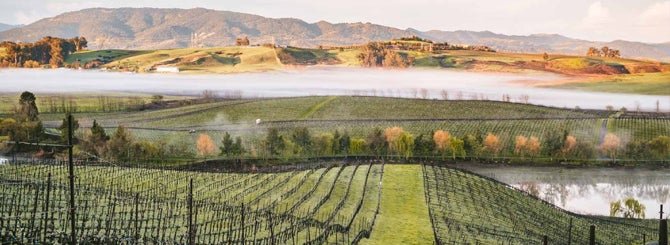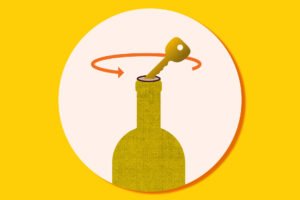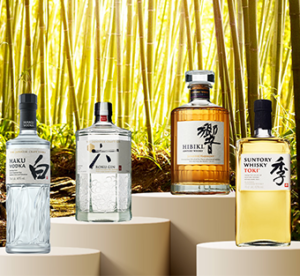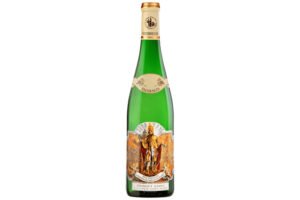The Winds Beneath Your Wines

[ad_1]
Wind’s influence on wine might be invisible, but it is also vital.
The wind blowing through a vineyard shapes the flavors – even the colors – you find in your glass. In the holy trinity of wine, sun is God, soil is Jesus, and the wind is the Holy Ghost, mysterious and misunderstood.
But a key player – in addition to influencing flavor, wine can also significantly reduce the need for chemical intervention in the vineyard. When a dry wind consistently blows over grapes, mildew simply can’t take hold.
“I have come to understand that wind is a major component of wine,” says Philippe Pascal, owner of Domaine du Cellier aux Moines, in Givry, Burgundy, explaining that a conversation with the late, great enologist and taste philosopher Jacques Puisais a few years ago transformed not only his understanding of much wind shapes the flavor of wine, but his entire approach to farming.
“After that conversation, research and careful observations of what was happening in the vineyard, I became convinced that the wind in our region trains the grapes, leaves and vines to be stronger and more resistant to disease. We are high up and we farm biodynamically so we think a lot about the energy of our plants. Because of these observations, we are now trellising the vines in the direction of the wind so that it can receive the full benefit of the wind.”
Not all winds have a positive influence on the vines though, Pascal cautions. Depending on the direction the winds are coming from, and the rate of their velocity, they can bring disease-busting, flavor-boosting power; or grey rot or bloom-shattering blasts.
Wind’s stamp on wine
In older wine-growing regions – such as the Rhône Valley and, to a lesser extent, Provence and Languedoc, where the Mistral winds blow – winemakers stand in awe of the wind’s vintage make-or-break powers.
“My first harvest in 2007 was not destined to be as tremendous as it is today,” says Christian-Yves Carré de Lusancay, winemaker at Domaine Saint Gavan in Gigondas. “The Spring was cold and rainy, we feared the grapes would not ripen well. But then in the summer, the Mistral wind blew constantly and dried up the vines and the surface of the soils, provoking a huge concentration in the berries and keeping them safe from fungal disease. The result was a highly concentrated wine with acidity and freshness; a wine saved by the wind.”
Florence Quiot, CEO of Famille Quiot, in Châteauneuf-du-Pape concurs, explaining that when the Mistral arrives “after a rain shower, it dries the air before disease germinate. It also has an effect on photosynthesis and therefore, on berry ripening. In dry conditions the vine decreases cellular respiration, which also reduces the synthesis of the components of the grape berry.”
In the US, there’s no widely adopted names for the winds that howl and whip grapes into shape in certain pockets of wine country, but that doesn’t mean vintners aren’t obsessed with them.

© Sonoma.com
| The Petaluma Gap AVA is literally defined by the wind.
Three new American Viticultural Areas (AVAs) – Van Duzer Corridor within Oregon’s Willamette Valley, circa 2019; Petaluma Gap, within California’s Sonoma, circa 2018; McMinnville, within Willamette Valley, circa 2005 – managed to establish their singular terroir to the Bureau of Alcohol, Tobacco, Firearms and Explosives based in part on the whipping, wine-defining wines that zing through their region.
“In a nutshell, Petaluma Gap is all about the wind; it makes the wine here,” says Erica Standcliff, winemaker at Pfendler Vineyards and president of the Petaluma Gap Winegrowers Alliance. “When we were submitting documents to the TTB for approval, we had weather stations tracking the force of the wind and showing that it delivers consistent gusts here that are 8-10 miles per hour stronger than the surrounding areas.”
On a hot day at the Pfendler estate vineyards, she says the wind keeps the temperature at a relatively tolerable 85F (29.4C), whereas it’s 100-plus in the rest of the region. Grapes simmering in 100-plus weather can easily flab up and lose their precision and power.
“The wind does many things to the grapes, including cool them down, but one of the most important is the way it creates a thicker skin,” she says. “This is especially key for Pinot Noir, which is naturally thin-skinned. The additional thickness leads to darker colors in the glass, more pronounced tannins, and the longer and slower growing season and ripening leads to superior phenolic ripeness, which results in a beautifully balanced Pinot.”
In Van Duzer’s AVA application, petitioners argued that the region’s wind speed increased “the levels of phenolic compounds in the fruit”, which “contribute to the taste, aroma and mouthfeel of wines”. The region’s windy clime does indeed have a profound influence on the resulting wine, say winemakers who work with vineyards all over the Willamette Valley.
“We work with a handful of vineyards influenced by Van Duzer corridor,” says Andy McVay, winemaker at Dobbes Family Estate, which sources grapes from the Willamette Valley, Rogue Valley and several other regions in Oregon. “Most of the Willamette Valley has winds of about five miles per hour, whereas in the Van Duzer corridor, the wind is often 10-15 miles per hour. The grapes that grow in these vineyards, where it is consistently cooler and the ripening season is longer, often up to 10 days longer, the grapes produce wines with higher acid, higher tannin and lower alcohol levels. This has been especially helpful in recent, warmer years like 2015 and 2016, because we are able to pursue the cool climate styles with the vineyards in Van Duzer.”
Taylor Pfaff, CEO of Left Coast Estate in Van Duzer adds that wind also reduces the incidence of “powdery mildew and botrytis. Both of these are largely caused by excessive moisture. Fierce winds dry out the vineyards each day to help eliminate this moisture and reduce disease pressure.” This lowered disease pressure leads to less need for chemical intervention as well.
Perhaps the easiest, and least technical way to think about wind is to liken it to an air conditioner. Picture the special way your hair might frizz, or skin might glow after a day out in the hot sun, versus a lightly air-conditioned room. Similar things happen to grapes sitting in breeze-free vineyards on hot summer days.
Wayne Bailey, owner and winemaker at Youngberg Hill in McMinnville, says the cooling breezes “act as an air conditioner, which mitigates the heat spikes we’ve been seeing in recent years. And not only that, it dries the grapes, which reduces disease pressure and helps with mildew. The wind helps me make wine the way I want to: biodynamic practices, no till, no irrigation, hands-off, little to no intervention in the vineyard or cellar.”
Wind can also, counterintuitively, warm things up a bit.
“The gusts we get here on Underwood Mountain can be crazy, and the wind here is an almost constant presence,” says Julia Bailey Gulstine co-owner of Loop de Loop Wines in Underwood, WA. “The wind reduces the effect of heat spikes of course, but it also helps with frost. We don’t have to worry about frosts.”
An ill wind
Jokes about flatulence aside, there are a number of bad winds that winemakers dread encountering.
“We welcome winds from the north, south and east in Burgundy, but the winds from the west bring the rain, which can sometimes bring problems, other times bring much needed water,” says Pascal.
In Mendoza, where the Zonda wind blows, “the effects are mostly negative”, says Franco Bastias, chief agronomist at Domaine Bousquet in Argentina’s Uco Valley. “It’s extremely harmful during spring, when the flower is very sensitive to high intensity winds and low humidity.”
But he says it can reduce disease pressure. To take advantage of good aspects and reduce the impact of the bad, Bastias and his team select grapes with “excellent flower and flower set ratio, which gives us the opportunity to minimize the impact. We also select varieties with tight bunches that could be helped by winds that remove the humidity of the clusters.”
Strangely, sometimes the lack of wind shapes the grapes as well. “In the Loire, the lack of wind allows the Chenin Blanc there to grow and develop soft flavors and body,” says Pascal. “No matter where you are, the personality of the wine is shaped by the dominant pattern of the wind.”
[ad_2]




